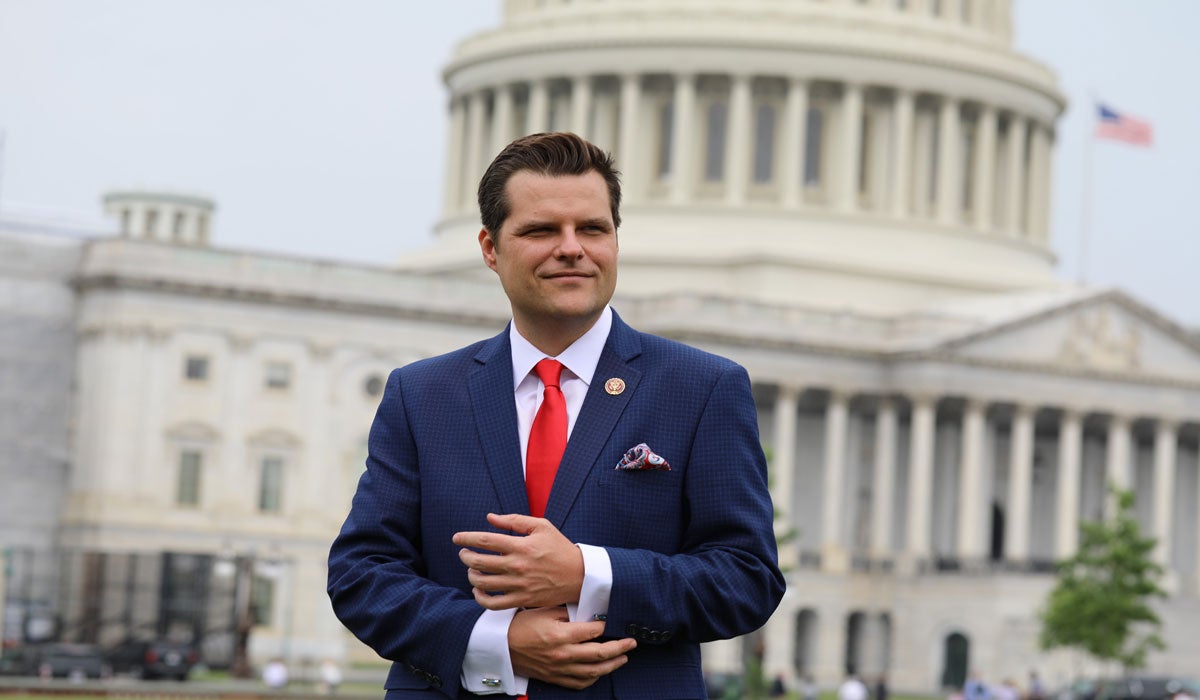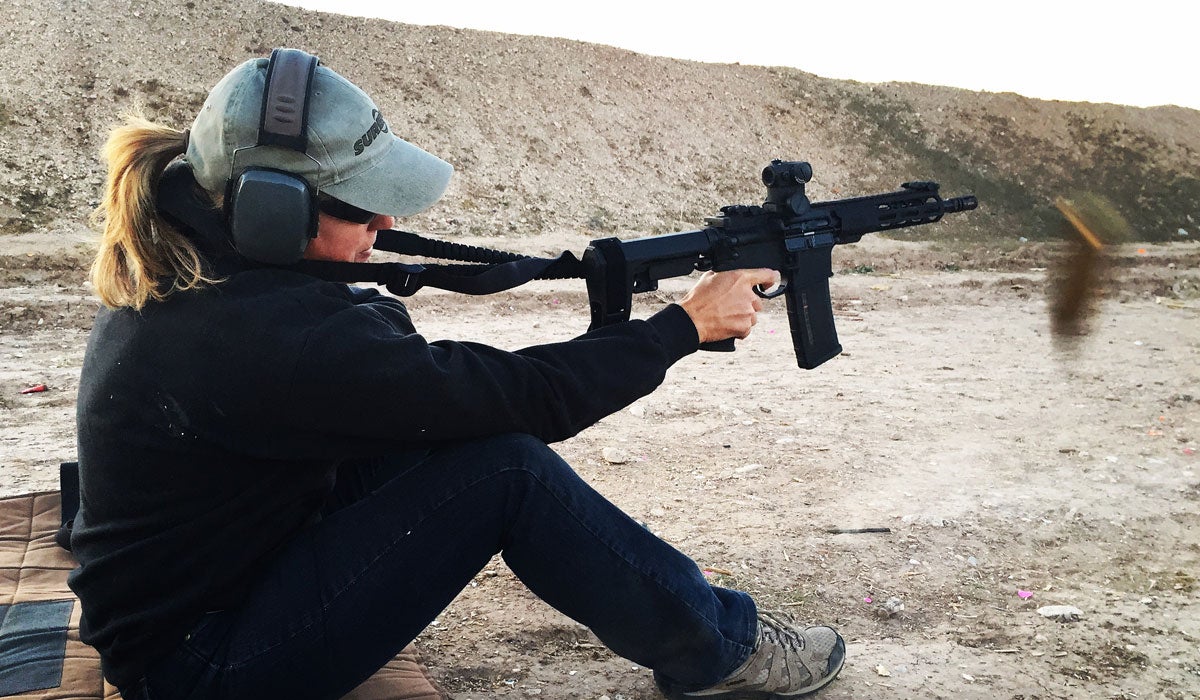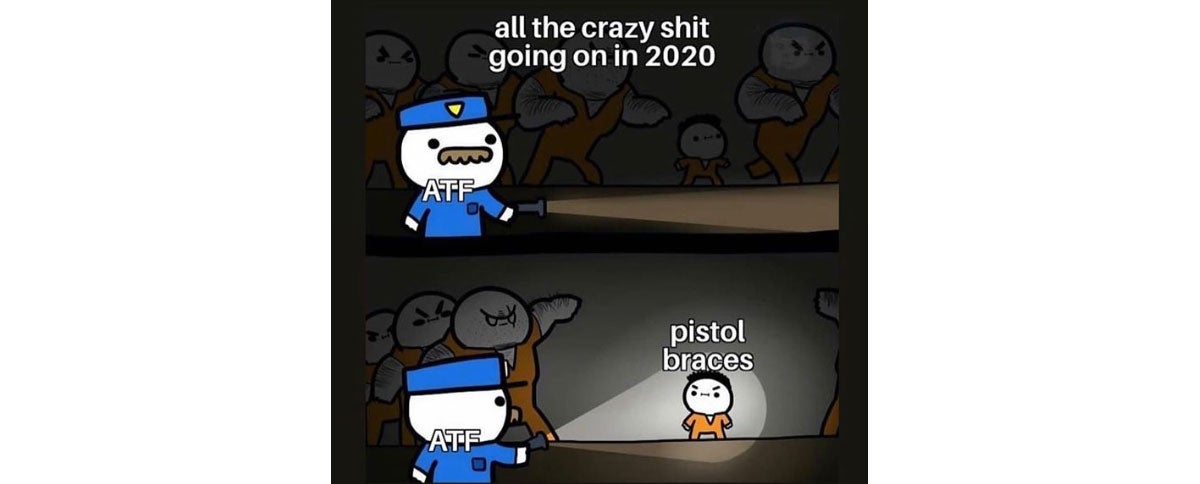Goetz Fires up Opposition to Secretly-Planned Arm Brace Ban
Eve Flanigan 07.01.20

On June 16, 2020, Congressman Matt Goetz (R-FL), sent a letter to US Attorney General William Barr and Regina Lombardo, acting director of the Bureau of Alcohol, Tobacco, Firearms, and Explosives (ATF). The letter demands answers regarding the apparently-secret plan by ATF to implement a ban on currently legal and popular arm braces. The plan was crafted in the absence of voter or elected representative involvement.

Arm braces for AR- and AK-style pistols were originally devised as adaptive equipment for people with injuries that prevent them from shoulder-mounting the firearm. Braces have gained vast popularity among gun owners with and without physical handicaps. ATF has, over the past five years, issued vague written interpretations of what is and isn’t legal regarding other accoutrements and use of brace-equipped firearms. It is generally accepted that their legal use includes using the brace as designed, strapped around the forearm and wielded at arm’s length or with the butt supported at the sternum or cheek with no shoulder contact. Additionally, if court precedents are any indicator, foregrips large enough to be grabbed by a fist are generally considered illegal on brace-fitted guns. A $200 National Firearms Act stamp (and the associated months- or years-long wait for approval) is required for the licensed owner to use a braced pistol (which is then re-defined as a short-barreled rifle) with confidence that s/he is clear in the eyes of ATF enforcers.
Goetz’s letter bemoans both existing arbitrary and proposed details of the ATF’s brace enforcement policy. Its vague terms facilitate the agency’s inconsistent and seemingly selective enforcement. Length of pull is given as an example.

Goetz claims that ATF has a firm but unpublished standard that any pistol with less than 13.5 inches’ length of pull—as measured from rear of the butt to the front of the trigger—constitutes a short-barreled rifle (SBR). Yet the agency has in several cases claimed that other firearms with a length of pull in excess of 13.5 inches was also an SBR, with no apparent law or consistent logic behind those decisions. In many cases, he says (and history proves), the outcome has been surprising and selective enforcement upon unwitting gun owners.

Now, with the word leaking out that ATF is considering an outright ban on braces, Goetz points out that approximately 700,000 current, law-abiding owners could become felons overnight. The agency has already earned infamy from meme artists for instigating paranoia with slippery definitions and fear of selective enforcement around braced firearms.
Three direct questions are posed by Goetz to Barr and Lombardo, as follows:
1. What specific criteria does ATF use to determine whether a firearm is designed and intended to be fired from the shoulder?
2. What specific ATF publications are available for Americans to determine whether their firearm is designed and intended to be fired from the shoulder?
3. How many firearms with affixed arm braces have been evaluated by the Firearms and Technology Division (of ATF) in support of other law enforcement agencies or criminal prosecutions?
These questions are clear evidence that Goetz has done his homework and knows that the agency will not be able to confidently answer questions 1) and 2), at least. He’s doing right by gun owners nationwide to take this matter to the judicial branch and bringing light to issues of government overreach that cause confusion and chronic anxiety among owners, vendors, and manufacturers of brace-equipped firearms.
